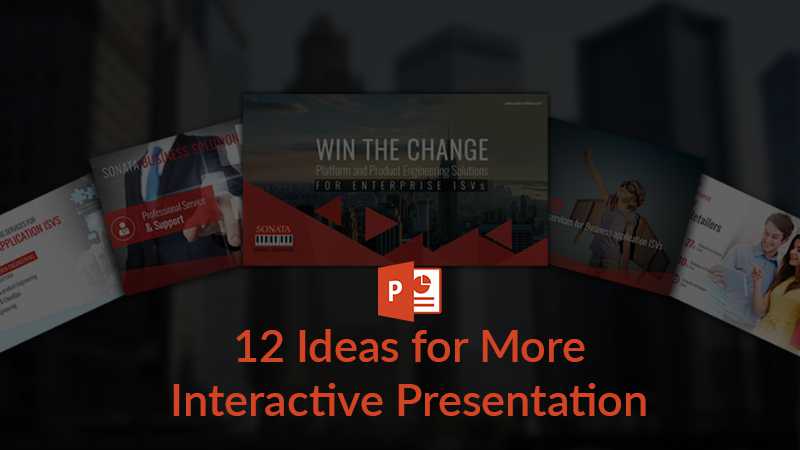12 ideas for more interactive presentation

If you think about it, providing an engaging presentation is a win-win situation. Not only will your audience less likely doze off, tinker with their phones or daydream but as a presenter, you can also be relieved of anxiety facing a crowd that’s more enthusiastic and dynamic.
But this engagement has to start with you.
Before you do, critical elements include knowing your audience and topic beforehand.
Ask yourself these questions: What are the most interesting or intriguing points in my topic? Which members of the audience will most likely be disinterested and how do I get them involved? What’s your audience size? You can do this by conducting a survey or poll beforehand.
Also set expectations at the start that their participation or questions will be needed at some point during the presentation. This will most likely make them pay attention.
Key to delivering a highly interactive presentation is an element of surprise with flair of creativity. Here are 12 ways to go about this:
Adding visual and audio effects
- Add self-shot videos/ You tube videos, short podcasts or audio recording to your presentation. Use with caution though as it’s important that these won’t detract you from your message but rather, further convey your point. Also, make sure they are of superior quality.
- Use alternate tools that incorporate powerful transitions, animations and music. There are many other interactive tools you can use like Powtoon or Flash or cloud-based online presentation tools like Prezi orHaiku Deck to transform static presentation into dynamic, awesome ones that tell a story. Which brings us to the next idea…
- Share a story. Whether you’re using advanced tools or simply yourself, storytelling is something that has always resonated with every audience.
- Use pictures and professional diagrams. Images and visual data capture a thousand words. By getting to incorporate more of these in your slides as opposed to text, your message will have more impact.
- Use non-offensive humor. It’s a good ice breaker and can also be used to set expectations in introducing a dull topic.
- Be generous with your gestures. Non-verbal communication is certainly more engaging. If you have remote attendees, turn on your webcam.
Involving your audience
- Prepare quizzes or contests based on your topic. An example would be to ask your audience to guess the answer or fill in the blanks in your slides. You can even take it a step further by giving away small tokens as prizes.
- Ask your audience to introduce themselves or for a show of hands by asking opening questions. If possible, get your audience moving as much as they can like standing up or clapping.
- Ask your audience to share their experience about the topic. Of course, you’d want to be tactful and not put them on the spot. So make sure it’s a topic they can easily relate to and share. Alternatively, you can encourage them to write down their questions at the start.
- Have someone from the audience read what’s on your slide before you elaborate on it.
- Divide your audience into small groups to discuss the topic among themselves. Then they can share this with the rest of the audience afterwards.
- Perform an actual demo or application and have a random audience participate in it. This will also make your presentation look more natural and less planned.
This list is by no means comprehensive. But as long as you keep in mind that the slides are there just as an aid and your audience should be the primary focus, then engaging them will a lot be easier and rewarding.
Source: 24slides.com
